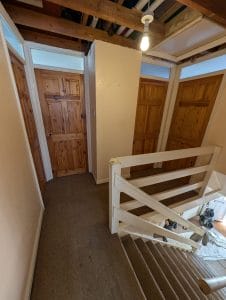If you live or work in a building with an old Artex ceiling, you might be wondering if it contains asbestos. Here’s a comprehensive guide to help you understand the risks, history, and what to do next.
 Did You Know Artex Used to Contain Asbestos?
Did You Know Artex Used to Contain Asbestos?
Artex is a textured coating commonly used for decorative effects on ceilings and walls. Other similar brands include Marblecoat, Newtex, and Pebblecoat. Before the mid-1980s, asbestos was often added to these products to make them more durable and fire-resistant. It wasn’t until around 1984 that asbestos was phased out of most decorative coatings in the UK, but some products containing asbestos were still used after that date, often due to leftover stock or imported materials.
If your ceiling was installed or modified before 1999, there’s a possibility that it could contain asbestos. It’s essential to understand that asbestos is dangerous when disturbed because it can release harmful fibres into the air, which can lead to serious health problems such as asbestosis, lung cancer, or mesothelioma.
Textured Decorative Coatings and Asbestos Risks
Artex and similar products were versatile, applied both internally and externally. The asbestos was mixed into the product as a binding material, typically making up around 2-5% of the coating. Although this is a relatively low percentage, even minimal asbestos exposure can be harmful, especially if the material is disturbed during renovation or maintenance work.
Testing laboratories can sometimes struggle with accurately identifying asbestos in Artex due to its composition. Since Artex often came as a powder and was mixed on-site, asbestos content could vary across different areas of the ceiling or wall. Inexperienced samplers or sampling from less representative areas (such as edges or near light fittings) may result in inaccurate test results, with some samples missing the asbestos content altogether.
 Modern Artex No Longer Contains Asbestos
Modern Artex No Longer Contains Asbestos
By 1999, asbestos use was completely banned in the UK, including its use in decorative coatings. If you have a ceiling that was textured after this date, it is unlikely to contain asbestos. However, without clear records, it’s always better to err on the side of caution, particularly if your home or building dates back to the mid-1980s or earlier.
To be absolutely sure, you should have the material professionally tested. If you’re planning any kind of work that could disturb the ceiling—like drilling or sanding—it’s vital to confirm whether asbestos is present before proceeding.
The Importance of Testing and Professional Help
Although textured coatings like Artex are generally considered low risk if left undisturbed, they can become hazardous during renovations. Drilling, scraping, or sanding can release harmful fibres into the air, especially in confined spaces such as homes.
If you suspect your ceiling contains asbestos, the safest option is to get it tested by an accredited asbestos testing service. These professionals are equipped with the necessary tools and expertise to handle asbestos safely and will take representative samples to avoid the problems associated with inaccurate testing.
Once the presence of asbestos is confirmed, the next step is to determine whether the material needs to be removed or can simply be encapsulated (covered and sealed). Removing asbestos should only be done by licensed contractors, as they have the training and equipment to do so safely, in accordance with UK regulations like the Control of Asbestos Regulations 2012.
Contact Crucial Environmental for Expert Advice
At Crucial Environmental, we provide comprehensive asbestos testing and advice. Whether you need a simple test or a full removal plan, our trained professionals are here to help you make informed decisions to keep your environment safe. Don’t hesitate to contact us for a consultation or to schedule asbestos testing for your property.

